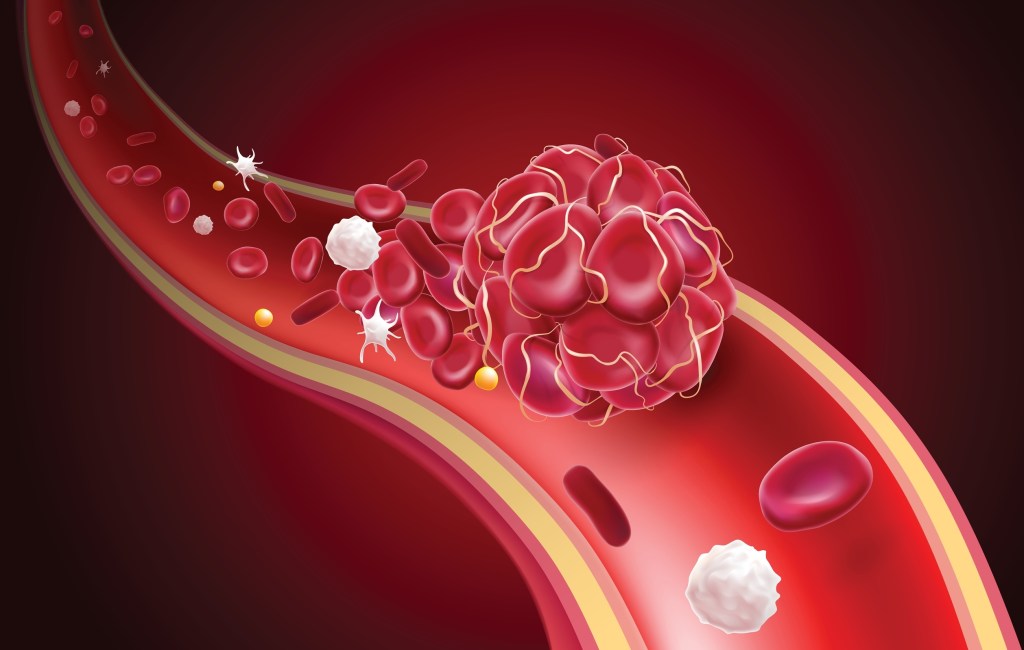At a glance
Limiting sugars and refined carbs helps support healthy cholesterol balance, blood pressure regulation, and normal insulin sensitivity, which is why Healthy Keto® may be one of the best diets for heart disease. Prioritizing whole foods, improving the sodium-to-potassium ratio, and avoiding inflammatory ingredients can further support cardiovascular wellness.
Nearly 128 million adults in the U.S. have some form of heart disease, with 800,000 people experiencing a heart attack each year.
While there are many potential contributing factors, dietary habits can significantly impact heart health and cardiovascular disease risk.
Discover the common causes of cardiovascular problems and learn how to approach the best diet for heart disease.
What is heart disease?
Heart disease is a broad term for several debilitating or life-threatening heart conditions, including blood vessel disease, heart valve or muscle disease, and irregular heartbeats, also referred to as arrhythmias.
Poor cardiovascular health is the leading cause of death in the U.S., with the most common form being coronary artery disease (CAD). CAD occurs when the arteries to the heart become narrow due to plaque buildup, known as atherosclerosis.
Many heart diseases are silent killers, meaning those with cardiovascular conditions often don’t notice significant signs until they experience arrhythmias or a major event, such as a heart attack, cardiac arrest, stroke, or heart failure.
Here are common cardiovascular events and their symptoms:
- Arrhythmia: Fluttering, pounding, or racing heartbeat, accompanied by shortness of breath, fatigue, or lightheadedness
- Heart attack: Chest pain, shortness of breath, arm, neck, and jaw pain, sweating, rapid heartbeat, nausea, lightheadedness, or unusual tiredness
- Cardiac arrest: Palpitations, chest pain, shortness of breath, sudden collapse, no pulse or breathing
- Heart failure: Fatigue, weakness, shortness of breath, swelling in the legs, ankles, and feet, persistent cough, wheezing, abdominal swelling
Lifestyle factors, such as a diet high in sugar and refined carbohydrates, physical inactivity, smoking, and alcohol misuse, are well-established primary causes of heart disease.
In addition, high blood pressure, known as hypertension, as well as diabetes and high cholesterol levels, can also raise the risk of developing heart disease.
Watch the video below to learn more about the best diet for heart disease.
Understanding dietary fats and cholesterol
Cholesterol is a fat-like substance found in every cell. The liver produces 80 percent of the body’s total cholesterol, while the remaining 20 percent is obtained from dietary sources.
Dietary cholesterol can be acquired from animal products, such as eggs, full-fat dairy, and fatty meats. The liver adjusts cholesterol production to maintain healthy levels in response to dietary fat intake.
Although it’s widely believed that a diet high in saturated fat raises cholesterol, carbohydrates and sugars are significantly more detrimental to heart health.
Ultra-processed, sugary foods can accelerate cholesterol production and contribute to atherosclerotic plaque buildup and coronary heart disease.
While saturated fat and animal-based foods can influence cholesterol metabolism, they don’t necessarily raise the types of cholesterol linked to a higher risk of arterial blockages and heart disease.
Types of cholesterol
High-density lipoprotein (HDL) cholesterol, widely known as the good cholesterol, carries excess cholesterol from the arteries to the liver for removal, which helps prevent plaque buildup.
In contrast, low-density lipoprotein (LDL), called bad cholesterol, transports cholesterol from the liver to the body’s cells and tissues. High LDL levels increase the risk of arterial blockage and heart disease.
However, there are two primary types of LDL particles–small dense, and large buoyant–and their health effects can differ significantly based on particle size.
Large-buoyant, known as type A, LDL particles are less likely to penetrate the artery walls and contribute to plaque formation.
Higher levels of type A LDL are associated with saturated fat intake from animal-based foods and may not be a cause for concern.
Conversely, small-dense type B LDL particles are linked to high-carb diets and can increase cardiovascular disease risk, as they’re more compact and can penetrate the arterial walls more easily.

Blood pressure and sodium explained
Sodium and potassium form the sodium-potassium pump, which regulates the cellular movement of sodium and potassium ions to maintain the body’s fluid balance and blood pressure levels.
Most people consume large amounts of sodium from ultra-processed and salty foods while not getting enough potassium. This can lead to electrolyte imbalances that can increase blood pressure and cardiovascular disease risk.
A study published in the Journal of the Academy of Nutrition and Dietetics found that 90 percent of Americans consume excess amounts of sodium, and only 2 percent meet daily potassium needs.1
While healthcare professionals agree that avoiding excess salt benefits cardiovascular function, few note the importance of high potassium intake to achieve an optimal sodium-to-potassium ratio crucial for maintaining heart health.

The best diet for heart disease
The Standard American Diet, rich in sugar and refined carbohydrates, causes repeated spikes in blood sugar and insulin levels. Over time, this constant demand for insulin can lead to insulin resistance, a key driver of metabolic and cardiovascular disease.
Insulin resistance is a metabolic imbalance characterized by cellular inability to effectively absorb blood sugar, which may contribute to heart disease through several mechanisms.
High blood sugar levels increase oxidative stress, inflammation, and the accumulation of small-dense LDL particles, all of which can damage blood vessels and contribute to atherosclerotic plaque buildup.
Obesity is another condition associated with insulin resistance that strains the heart and prevents it from pumping blood effectively.
This explains why a heart-healthy diet rich in healthy fats, low carbs, and large amounts of non-starchy vegetables promotes insulin sensitivity and supports normal heart function.
Healthy Keto® is a modified version of the traditional keto diet that focuses on high-quality fats, moderate protein intake, and 7 to 10 cups of non-starchy vegetables daily, while avoiding added sugars and limiting carbohydrates to less than 50 grams a day.
This dietary approach supports heart health and can benefit those with high cholesterol, insulin resistance, and other risk factors for heart disease by switching the body’s metabolism to using fat, rather than sugar, to generate energy.
A study published in Nutrients found that ketogenic diets significantly reduced insulin and fasting glucose, while raising beneficial HDL cholesterol, thereby lowering several primary risk factors of cardiovascular disease development.2

The best heart-healthy foods
Choosing the right food significantly influences your heart and overall health, including blood pressure, cholesterol levels, and inflammatory markers.
Here are six foods to add to a heart-healthy eating plan.
1. Wild-caught fish
Oily fish, such as salmon, tuna, cod, and sardines, are rich sources of omega-3 fatty acids, a type of unsaturated fat widely known for its heart benefits.
Omega-3 fats have been shown to boost cardiovascular function by increasing HDL cholesterol, inhibiting arterial plaque formation, promoting antioxidant activity, and reducing oxidative stress markers.
2. Liver
Beef liver is a nutritional powerhouse, containing significant amounts of B vitamins, vitamin D3, and K2, iron, and coenzyme Q10.
These nutrients are vital for red blood cell synthesis, energy production, oxygen transport, and nerve function, all of which are critical for maintaining the heart’s ability to pump effectively.
Vitamin K2 and D3 can also help relax the blood vessels and transport calcium away from soft tissues into the bones and teeth. This helps reduce the risk of arterial calcification and plaque formation.

3. Extra virgin olive oil
Extra virgin olive oil (EVOO) offers exceptional concentrations of oleic acid, a healthy monounsaturated fat that helps lower LDL and raise HDL cholesterol levels.
EVOO also contains potent antioxidants, including vitamin E, that help mitigate artery damage and regulate blood pressure.
Evidence published in the Journal of the American College of Cardiology concluded, “…those with higher olive oil intake had 14% lower risk of cardiovascular disease and 18% lower risk of coronary heart disease.”3
4. Almonds
Almonds contain several heart-supportive nutrients, including healthy fats, magnesium, and vitamin E, which boost blood flow, help protect the heart from free radical damage, and support blood pressure regulation.
Magnesium also helps maintain the heart rhythm by facilitating the movement of calcium and potassium in and out of the cells, which is essential for heart muscle contractions and relaxation.

5. Raw sauerkraut
Sauerkraut is an excellent source of fiber, vitamins C and K2, and potassium, which promotes antioxidant activity and mitigates calcium buildup in the arteries.
Raw sauerkraut is also a rich source of probiotics. These beneficial microbes have been found to help balance cholesterol levels and support healthy blood pressure.
6. Dark leafy green vegetables
Leafy greens, such as kale, spinach, collard greens, and bok choy, are an excellent source of vitamin K, antioxidants, and minerals that help protect the arteries from calcification.
Eating large salads also boosts nitrate intake, thereby promoting arterial elasticity and healthy blood pressure.
Research published in the European Journal of Epidemiology found that consuming just one cup of nitrate-rich leafy green vegetables daily lowered cardiovascular disease risk by up to 26 percent.4

Foods to avoid to protect your heart
Contrary to popular belief, saturated fat from meat, high-fat dairy products, and other animal products isn’t the primary culprit for heart and cardiovascular disorders.
Here are four foods to avoid to reduce your risk of heart disease.
1. Sugar and starches
Refined sugar and starches promote chronic inflammation in blood vessels, raise blood sugar and insulin, and contribute to hypertension and obesity, which are significant risk factors for various heart conditions.
2. Gluten
In individuals with celiac disease or gluten sensitivity, gluten can trigger immune-related inflammation and damage the intestinal lining.
Removing gluten-containing grains, such as wheat, barley, and rye, may help reduce systemic inflammation and improve nutrient absorption, potentially supporting heart health and overall cardiovascular wellness.

3. Refined seed oils
While minimally processed seed oils contain monounsaturated and polyunsaturated fats, heavily processed cooking oils, such as canola or soybean oil, are highly unstable and prone to oxidation.
Fat oxidation during high-heat cooking can generate the formation of inflammatory compounds that can damage heart cells.
These oils are also high in pro-inflammatory omega-6 fatty acids and often processed with hexane. This chemical solvent can trigger chronic inflammatory pathways and has been linked to increased heart disease risk.
4. Trans fats
Trans fats, also known as trans fatty acids or partially hydrogenated oils, are volatile fats found in processed foods, especially in fast food, baked goods, snack foods, and deli meats.
Diets high in trans fats are linked to cholesterol imbalance and inflammation, greatly increasing the risk of heart attacks and stroke.

More diet tips for a healthy heart
Intermittent fasting, which involves time-restricted periods of eating and fasting, can be a great addition to a heart-healthy diet.
This is likely due to its beneficial effects on inflammation, weight management, and insulin balance, which can reduce the likelihood of developing heart conditions.
Carefully reading food labels can also help you identify hidden sugars and starches and reduce your exposure to artificial ingredients, minimizing damage to the cardiovascular system.
Additionally, avoiding alcohol can significantly reduce the risk of heart disease, as excess consumption is linked to elevated blood pressure, arrhythmias, and weakened heart muscle function. This also includes alcoholic beverages believed to be heart-healthy, such as red wine.
“When you drink any type of alcohol, the liver converts ethanol into acetaldehyde,” explains Dr. Berg. “This highly toxic byproduct can trigger oxidative stress and cellular damage in the heart, liver, and other major organs.”
Finally, drinking green tea can enhance the body’s antioxidant capacity and help break up plaque in the arteries, likely attributed to a plant compound called epigallocatechin gallate (EGCG).
Key takeaways
- Heart disease is often linked to poor lifestyle habits, including diets high in refined carbs, sugar, and processed foods, as well as inactivity, smoking, and alcohol use.
- Healthy Keto may be one of the best diets for heart disease as it limits high-carb foods and emphasizes nourishing fats, proteins, and non-starchy vegetables to support metabolic balance and cardiovascular wellness.
- Wild-caught fish, liver, extra-virgin olive oil, almonds, raw sauerkraut, and leafy greens provide key nutrients that help support arterial health, oxidative balance, and normal blood pressure.
- Limiting sugar, refined starches, gluten, seed oils, and trans fats helps promote inflammatory balance and reduce exposure to oxidative stressors, supporting overall cardiovascular health.
- Intermittent fasting, reading food labels carefully, limiting alcohol, and incorporating antioxidant-rich beverages such as green tea can further support cardiovascular wellness.
FAQ
What is the best diet for heart disease?
A diet centered on minimally processed foods and nourishing fats, while low in carbohydrates, such as a well-formulated Healthy Keto® approach, can support heart health by enhancing insulin sensitivity, improving cholesterol balance, and increasing the intake of essential nutrients.
What is the best food to clean your arteries?
Natto, a traditional Japanese fermented soybean dish, is one of the best foods for arterial health. It contains nattokinase, a powerful enzyme shown to help break down fibrin, a protein involved in blood clot formation. Incorporating natto may support healthy blood flow, reduce plaque buildup, and lower the risk of arterial blockages.
What foods should I avoid if I have heart disease?
It’s recommended that those with heart conditions avoid refined sugars and carbohydrates, gluten-containing grains, seed or vegetable oil, and trans fatty acids typically found in processed foods. These ingredients contribute to cellular oxidation and chronic inflammation, both of which are significant risk factors for heart damage.
Is red wine good for your heart?
No, red wine isn’t good for your heart despite containing certain antioxidant compounds. Alcohol metabolism generates acetaldehyde, a toxic byproduct linked to heart damage and an increased risk of cardiovascular disease.
Sources
- https://pmc.ncbi.nlm.nih.gov/articles/PMC9237821/ ?
- https://pmc.ncbi.nlm.nih.gov/articles/PMC5452247/ ?
- https://pmc.ncbi.nlm.nih.gov/articles/PMC7233327/ ?
- https://pubmed.ncbi.nlm.nih.gov/33884541/ ?

















